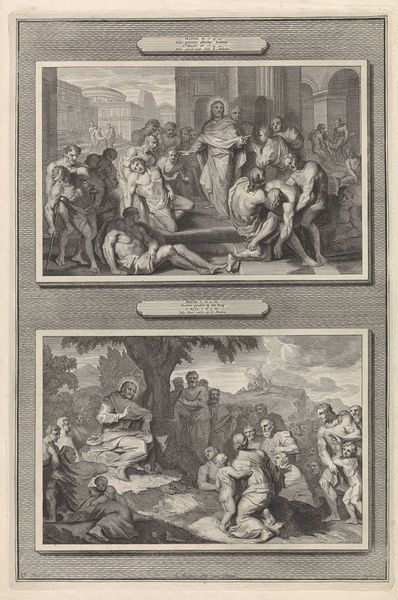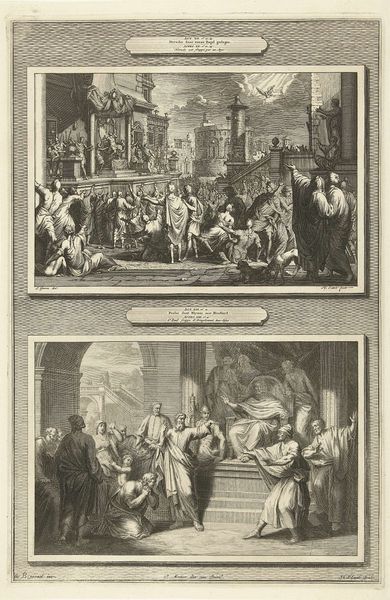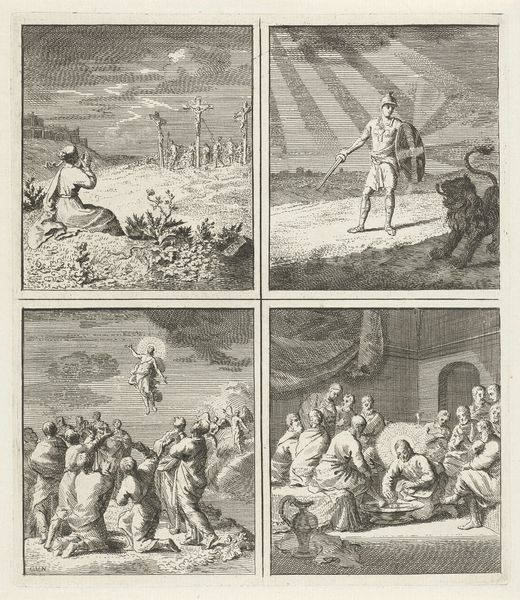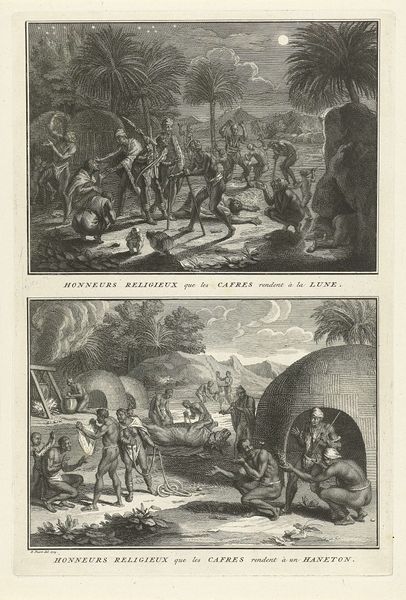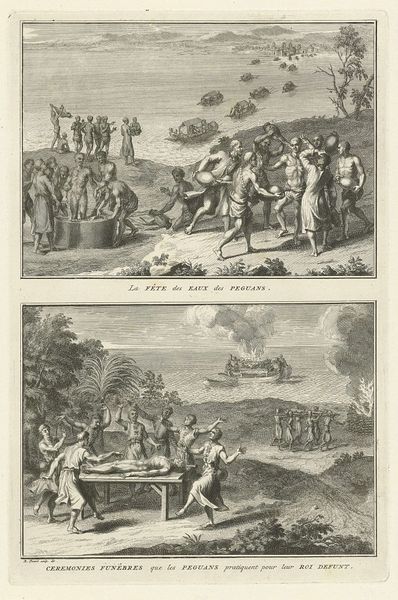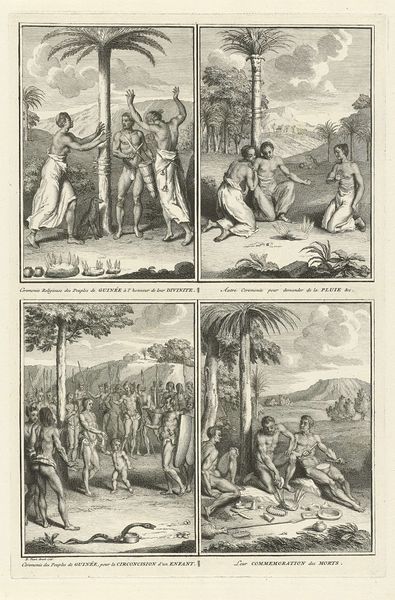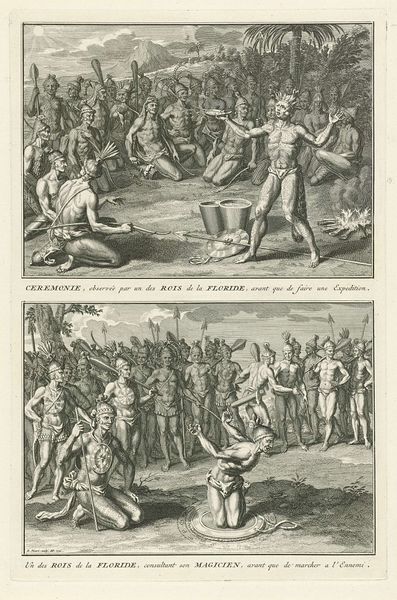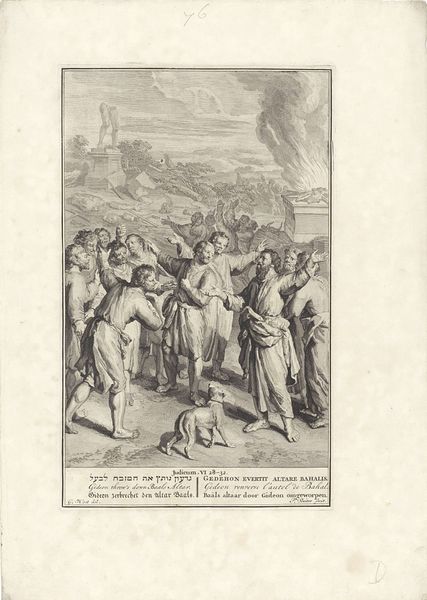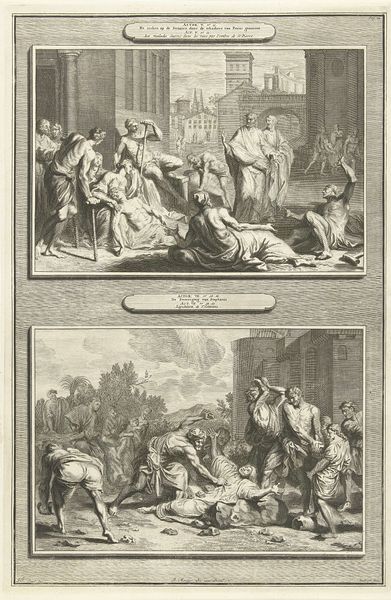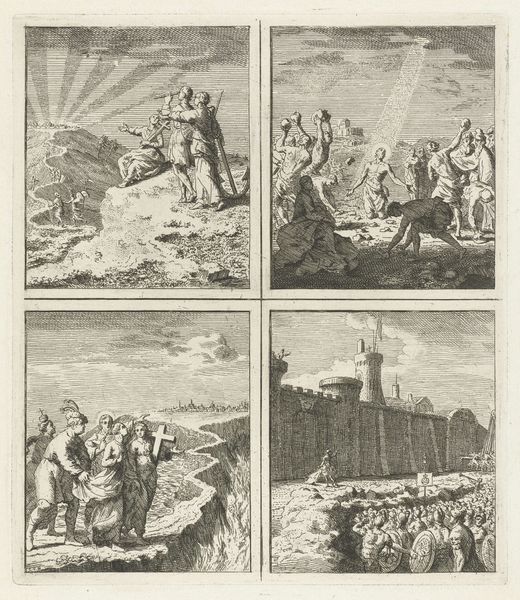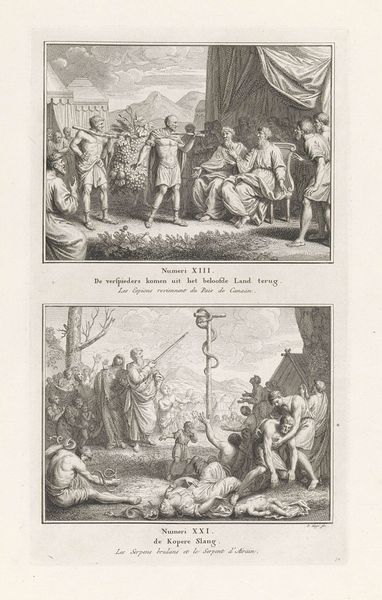
Begrafenisrituelen van oorspronkelijke bewoners van Mexico en Venezuela 1721
0:00
0:00
bernardpicart
Rijksmuseum
print, engraving
# print
#
old engraving style
#
engraving
Dimensions: height 338 mm, width 220 mm
Copyright: Rijks Museum: Open Domain
Curator: Looking at this print, what strikes you first? For me, it’s the way it attempts to document what the artist likely never personally witnessed. Editor: The stark contrast between the meticulously etched figures and the brutal, almost voyeuristic depiction of mourning rituals—there's an unsettling distance, isn't there? A gaze upon ‘otherness.’ Curator: Precisely. This engraving, titled "Begrafenisrituelen van oorspronkelijke bewoners van Mexico en Venezuela," from 1721 by Bernard Picart, provides us with depictions of burial rituals from both Mexican and Venezuelan indigenous peoples. Editor: It's interesting to consider this work in the context of early Enlightenment thinking and burgeoning colonialism. Picart is compiling information, but how much is shaped by the power dynamics of the time? I mean, the composition itself—quadrants like specimen slides – presents the colonized as an exhibit. Curator: That is a salient point. Picart was working in Amsterdam, a major center of trade and information at the time, but this image still needs to be situated within the broader historical framework of colonialism and its impact on Indigenous cultures. Consider the way the rituals are described—framed, exoticized. Editor: The emotional disconnect is palpable. Observe how active are these death rituals depicted within all of the images in the artwork: figures wailing and in pain in the bottom left frame, while the indigenous people carry bodies to be burned above; but here, the "facts" feel detached, divorced from human experience. The power dynamic makes authentic representation impossible. What agency did the people depicted actually have? Curator: Indeed, the work begs us to ask crucial questions. What role did this imagery play in shaping European perceptions of Indigenous people? It serves as an important reminder to critically examine historical records. The "objective" historical documents might reveal layers of political and cultural framing. Editor: Absolutely. So, while visually striking, we must view "Begrafenisrituelen van oorspronkelijke bewoners van Mexico en Venezuela" as more than a mere record, and rather engage critically with its role in a broader history of colonial representation and dispossession. Curator: Agreed. Let's hope it promotes important awareness of the complexities of our shared past.
Comments
No comments
Be the first to comment and join the conversation on the ultimate creative platform.

